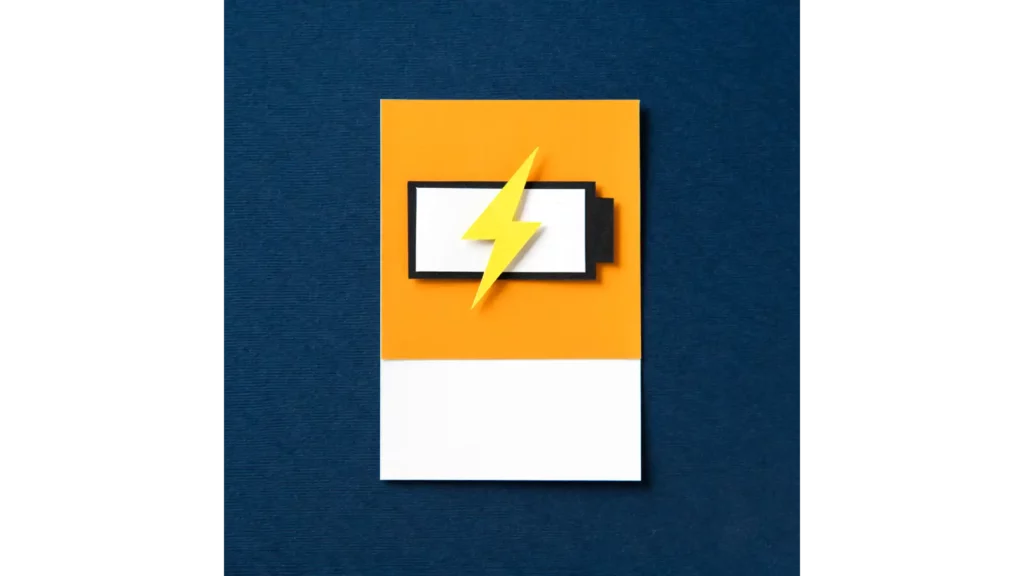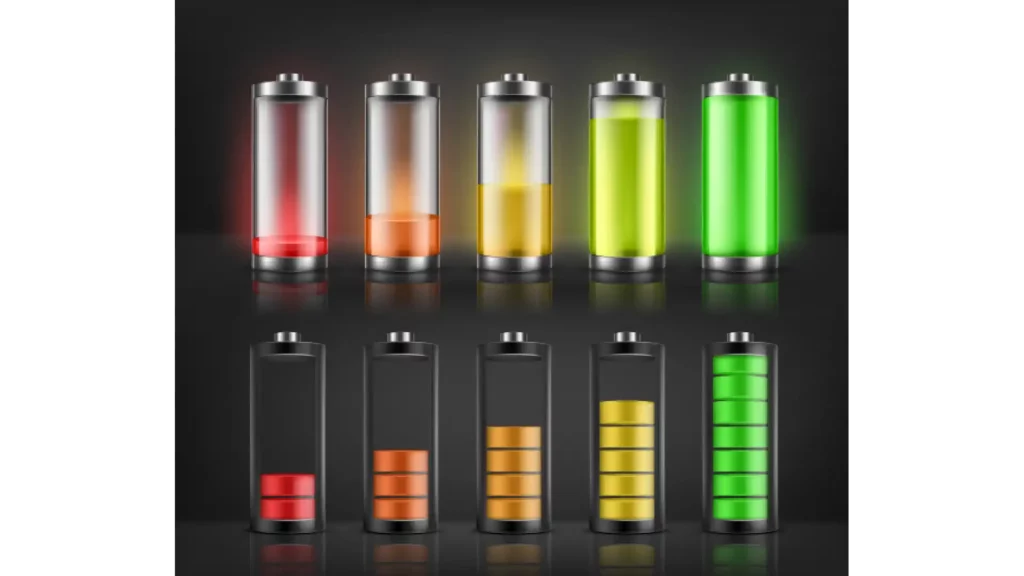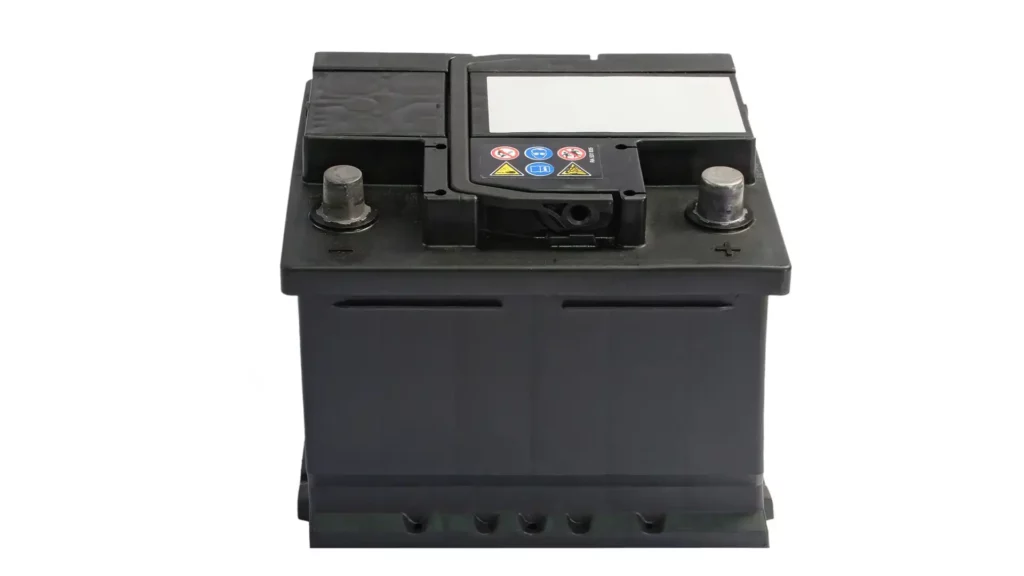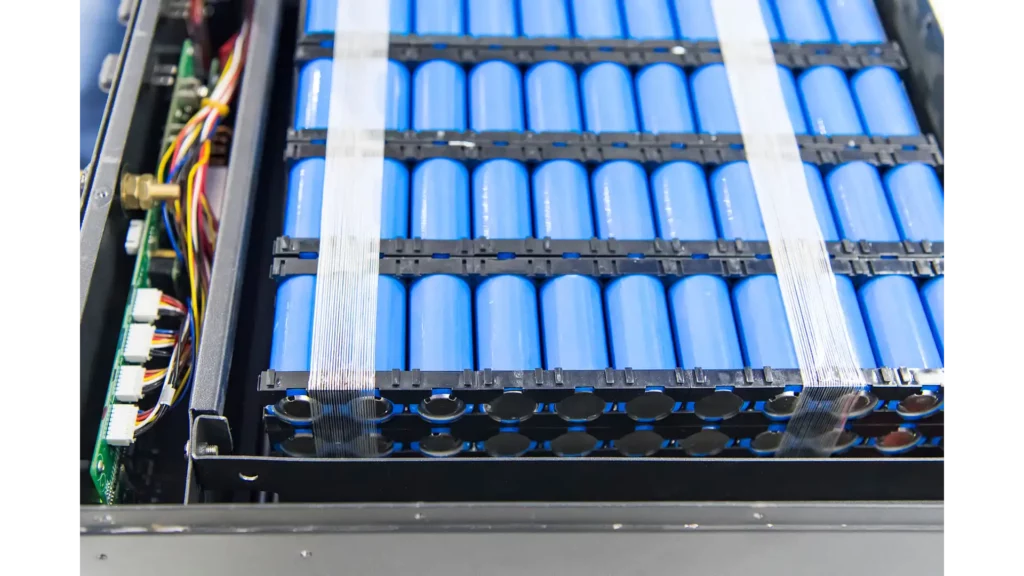In today's ever-evolving world, energy storage has become an indispensable part of our daily lives. From powering smartphones and laptops to running electric vehicles and storing renewable energy, batteries are the linchpin of modern technology.
A critical parameter that defines battery performance is Coulombic Efficiency of Batteries, a metric that assesses how effectively a battery can store and release electrical energy over time.
In this comprehensive guide, we will embark on an in-depth exploration of coulombic efficiency battery, delving into its significance, the multitude of factors influencing it, various measurement techniques, and strategies to enhance it.
By the end of this journey, you will gain profound insights into how understanding and optimizing Coulombic Efficiency of Batteries can lead to more sustainable and efficient energy storage solutions.
What Is Coulombic Efficiency of Batteries?
The Coulombic Efficiency (CE) of batteries is a fundamental and crucial metric within the realm of battery technology. This metric serves as a means to evaluate how effectively a battery can convert electrical energy into chemical energy during the charging process, and subsequently, how efficiently it can convert that stored chemical energy back into electrical energy during discharge.
In essence, Coulombic Efficiency quantifies a battery's capacity to store and release energy with minimal losses, whether in the form of heat or through other mechanisms. This efficiency is typically expressed as a percentage, with the ideal scenario being a CE value of 100%, signifying no energy losses during the conversion process.
However, real-world batteries fall short of this perfection due to a myriad of factors, leading to lower Coulombic efficiencies in practice. These factors include but are not limited to the battery's chemistry, design, temperature conditions, and usage patterns. Understanding and optimizing Coulombic Efficiency is essential for enhancing the performance and longevity of battery systems across various applications, from portable electronics to electric vehicles and renewable energy storage solutions.
The Significance of Coulombic Efficiency of Batteries
Coulombic efficiency is not just an abstract concept; it carries substantial importance in various aspects of energy storage:
Energy Conservation
Efficiency is the cornerstone of any energy storage system. High Coulombic Efficiency of Batteries means that less energy is wasted during the charging and discharging cycles, resulting in more efficient energy utilization and conservation. This aspect is especially critical in applications where energy loss is not only costly but also environmentally detrimental, such as electric vehicles and renewable energy storage.
Extending Battery Life
Low Coulombic efficiency can contribute to the degradation of battery performance over time. When energy is lost as heat during charge and discharge cycles, it can lead to increased temperature and stress within the battery, ultimately shortening its operational lifespan. By maximizing Coulombic Efficiency of Batteries, we can effectively extend the useful life of batteries and reduce the need for frequent replacements.
Economic Impact
In commercial and industrial settings, energy efficiency directly affects operational costs. Batteries with higher coulombic efficiency battery can reduce energy bills and increase the economic viability of energy storage solutions. This is particularly pertinent in scenarios involving grid-scale energy storage and peak demand management.

Factors Influencing Coulombic Efficiency of Batteries
Coulombic efficiency is not a fixed value; rather, it is influenced by a combination of factors, some intrinsic to the battery chemistry and others external, related to the operational conditions. Understanding these factors is crucial for optimizing Coulombic Efficiency of Batteries. Here are some of the key influencers:
Battery Chemistry
Different battery chemistries exhibit varying levels of coulombic efficiency battery. For instance, lithium-ion batteries are well-known for their high Coulombic efficiencies, often exceeding 95%. This is due to their stable and well-established chemistry. In contrast, other chemistries like lead-acid or nickel-cadmium may exhibit lower efficiencies due to their inherent characteristics.
Temperature
Temperature plays a pivotal role in battery performance. Extreme temperatures, whether too high or too low, can adversely affect Coulombic Efficiency of Batteries. High temperatures can accelerate degradation and increase energy losses, while low temperatures can slow down electrochemical reactions, reducing efficiency. Thus, maintaining optimal temperature conditions is paramount for maximizing Coulombic efficiency.Charge and Discharge Rates
The rate at which a battery is charged or discharged significantly impacts its Coulombic Efficiency of Batteries. How Batteries works often exhibit lower efficiencies at high charging or discharging rates. This phenomenon is attributed to increased internal resistance and heat generation, both of which lead to greater energy losses.
State of Charge (SOC)
The state of charge of a battery, i.e., how much energy it currently holds relative to its total capacity, can influence Coulombic Efficiency of Batteries. Batteries may exhibit different efficiencies at different SOC levels. For example, some batteries may have lower efficiency when they are nearly empty or fully charged.
Cycling Conditions
The number of charge and discharge cycles a battery undergoes can also affect its Coulombic Efficiency of Batteries. Over time, as a battery cycles, it may experience capacity fade and increased internal resistance, both of which contribute to lower efficiency.
Measuring Coulombic Efficiency
Precisely measuring the coulombic efficiency battery of a battery is paramount for assessing its performance. This typically involves meticulous monitoring of the input and output energy during charge and discharge cycles, followed by the calculation of efficiency using a simple formula:
Coulombic Efficiency (CE) = (Discharge Capacity / Charge Capacity) * 100%
Where:
- Discharge Capacity represents the amount of energy released during discharge, typically measured in Ampere-hours (Ah) or Watt-hours (Wh).
- Charge Capacity signifies the amount of energy input during charge, also measured in Ampere-hours or Watt-hours.
Accurate measurements and sophisticated instrumentation are indispensable for obtaining dependable Coulombic Efficiency of Batteries values.

Strategies to Improve Coulombic Efficiency of Batteries
Enhancing coulombic efficiency battery is a multifaceted endeavor that involves various approaches aimed at optimizing battery performance. Here are some strategies to improve Coulombic efficiency:
Battery Management Systems (BMS)
Implementing an advanced Battery Management System (BMS) can significantly enhance coulombic efficiency battery. A BMS continuously monitors and controls various parameters affecting battery performance, including temperature, SOC, and charge/discharge rates. By orchestrating the battery's operation, a well-designed BMS can optimize it to maximize efficiency and lifespan.
Improved Battery Chemistries
Battery chemistry research continues to progress, leading to the development of batteries with higher Coulombic Efficiency of Batteries. Lithium-ion batteries, for instance, have already achieved high Coulombic efficiencies, but ongoing advancements in materials and design hold the promise of even better performance in the future.
Thermal Management
Maintaining optimal temperature conditions through effective thermal management systems can significantly improve Coulombic efficiency. Cooling or heating systems can mitigate the detrimental effects of temperature extremes on battery performance, ensuring that the battery operates within its ideal temperature range.
Optimal Charge/Discharge Profiles
Careful control of the charging and discharging rates and profiles is essential for maintaining high coulombic efficiency battery. Avoiding rapid charging or discharging beyond recommended limits can help minimize energy losses, thereby maximizing efficiency. Aging Mitigation
Implementing strategies to mitigate battery aging is crucial for sustaining high Coulombic efficiency throughout a battery's lifespan. These strategies may include avoiding deep discharges, overcharging, and adhering to manufacturer-recommended usage guidelines.

Real-world Applications
Understanding and improving Coulombic Efficiency of Batteries have tangible and practical implications across a spectrum of industries and applications:
Electric Vehicles (EVs)
Electric vehicles heavily rely on batteries for energy storage and propulsion. High coulombic efficiency battery in EV batteries translates to extended driving ranges, reduced charging times, and enhanced overall vehicle performance, making them more attractive and practical for consumers.
Renewable Energy Storage
Efficient energy storage is pivotal for harnessing the full potential of renewable energy sources like solar and wind power. Batteries with high Coulombic efficiency can efficiently store excess energy generated during peak production and release it when needed, thereby contributing to grid stability and enhancing the sustainability of renewable energy systems.
Consumer Electronics
In the realm of consumer electronics, including smartphones, laptops, and other portable devices, batteries with high coulombic efficiency battery are a boon. Longer battery life and faster charging times are essential for improving the user experience and reducing the frequency of recharging.
Coulombic Efficiency Lithium Ion Battery
Coulombic efficiency, especially in the context of lithium-ion batteries, is a paramount aspect that demands our attention. These batteries have revolutionized portable electronics, electric vehicles, and renewable energy storage due to their high Coulombic efficiency. Let's explore how Coulombic efficiency plays a pivotal role in the performance of lithium-ion batteries.
Understanding Coulombic Efficiency Lithium Ion Battery
In the world of energy storage, lithium-ion batteries stand out for their exceptional Coulombic efficiency. When we talk about Coulombic efficiency in lithium-ion batteries, we refer to the ability of these batteries to efficiently store and release energy during their charge and discharge cycles. It measures how effectively lithium ions can shuttle between the anode and cathode during these processes, without significant energy losses.
Significance of Coulombic Efficiency in Lithium-Ion Batteries
Coulombic efficiency is particularly crucial in lithium-ion batteries for several reasons:
- Battery Performance: Coulombic efficiency directly affects the overall performance of lithium-ion batteries. Higher Coulombic efficiency means that a greater percentage of the energy put into the battery during charging is effectively stored and can be retrieved during discharge. This translates to longer-lasting, more reliable batteries.
- Battery Lifespan: In the case of lithium-ion batteries, maintaining high Coulombic efficiency is essential for prolonging their lifespan. A battery that operates with lower Coulombic efficiency may experience increased heat generation and greater wear and tear, leading to premature degradation.
- Consumer Electronics: Many of our daily gadgets, such as smartphones and laptops, rely on lithium-ion batteries. These devices benefit significantly from high Coulombic efficiency, as it ensures longer usage between charges and extended battery lifespan.
- Electric Vehicles: The automotive industry has embraced lithium-ion batteries for electric vehicles (EVs). High Coulombic efficiency in EV batteries means greater driving ranges, reduced charging times, and improved vehicle performance, making electric mobility more practical and appealing.
Improving Coulombic Efficiency of Lithium-Ion Batteries
Enhancing Coulombic efficiency in lithium-ion batteries remains an ongoing area of research and development. Researchers are continually exploring innovative materials, electrode designs, and electrolyte formulations to further optimize this critical parameter. Advances in manufacturing processes and battery management systems (BMS) are also contributing to improving the Coulombic efficiency of lithium-ion batteries.

Future Trends and Research
In the rapidly evolving realm of battery technology and Coulombic efficiency, ongoing research and development efforts are propelling the field into exciting new frontiers. Researchers and engineers are dedicatedly delving into a multitude of approaches, encompassing innovative materials, cutting-edge designs, and advanced manufacturing processes, all aimed at ushering in a new era of batteries that surpass current standards of efficiency.
One notable trajectory in battery technology is the exploration of novel materials that promise to revolutionize energy storage. Researchers are investigating materials with exceptional energy density, durability, and safety properties, as well as those that can be sustainably sourced. These materials hold the potential to significantly enhance the performance and longevity of batteries across various applications, from consumer electronics to electric vehicles and renewable energy systems.
Furthermore, the fusion of machine learning and data analytics is playing a pivotal role in optimizing battery performance and management. By leveraging artificial intelligence and predictive analytics, engineers can monitor and analyze battery behavior in real-time, enabling precise control and adaptive strategies to enhance efficiency, extend lifespan, and ensure the safety of battery systems. This synergy between data-driven insights and battery technology is ushering in an era of intelligent energy storage solutions.
FAQs: How to Calculate Coulombic Efficiency of Batteries
How to Calculate Coulombic Efficiency of a Lithium-Ion Battery?
Calculating Coulombic efficiency for a lithium-ion battery involves monitoring the charge and discharge capacities accurately. Here's a basic formula to calculate it:
Coulombic Efficiency (CE) = (Discharge Capacity / Charge Capacity) * 100%
Measure the discharge capacity (in Ah or Wh) during battery discharge and the charge capacity (in Ah or Wh) during battery charging. Then, use the formula to determine the Coulombic efficiency as a percentage.
How to Calculate Coulombic Efficiency of a Battery?
Coulombic efficiency can be calculated for various types of batteries, not just lithium-ion. To calculate it for any battery, you follow the same basic formula:
Coulombic Efficiency (CE) = (Discharge Capacity / Charge Capacity) * 100%
Simply measure the discharge and charge capacities of the battery accurately, and then use the formula to calculate Coulombic efficiency as a percentage.
What Is the Coulombic Efficiency of a Lithium-Ion Battery?
The Coulombic efficiency of a lithium-ion battery is a measure of how effectively the battery can store and release electrical energy. It's calculated using the same formula mentioned earlier. The value can vary based on battery chemistry, temperature, and other factors, but lithium-ion batteries typically exhibit high Coulombic efficiencies, often exceeding 95%.
Understanding and Applying Coulombic Efficiency in Lithium Metal Batteries
Coulombic efficiency is equally applicable to lithium metal batteries. To calculate it for lithium metal batteries, you follow the same formula:
Coulombic Efficiency (CE) = (Discharge Capacity / Charge Capacity) * 100%
Accurate measurement of discharge and charge capacities is essential for determining Coulombic efficiency in lithium metal batteries. Understanding and applying this metric can help assess and optimize the performance of lithium metal battery systems.
What Is Coulombic Efficiency of a Battery?
The Coulombic efficiency of a battery is a metric that quantifies how effectively the battery can convert electrical energy into chemical energy during charging and convert it back into electrical energy during discharge, while minimizing energy losses. It is expressed as a percentage and provides insights into the efficiency and performance of a battery system.
How Do Temperature Conditions Affect Coulombic Efficiency?
Temperature plays a significant role in the Coulombic efficiency of batteries. Generally, lower temperatures can reduce the efficiency of a battery, leading to lower CE values. It's essential to consider and control temperature conditions when assessing and optimizing the Coulombic efficiency of a battery, as extreme temperatures can have a detrimental impact on battery performance.
Can Coulombic Efficiency Change Over Time?
Yes, Coulombic efficiency can change over time as batteries undergo charge-discharge cycles and experience wear and tear. Factors such as electrode degradation, electrolyte changes, and cell aging can contribute to changes in CE values. Monitoring and analyzing CE variations are crucial for maintaining and extending the lifespan of battery systems.
How Does Coulombic Efficiency Impact Battery Longevity?
Coulombic efficiency is closely related to battery longevity. Higher CE values indicate that a battery is more efficient in its energy conversion processes, which generally leads to reduced wear and tear on battery components. Batteries with higher CE values tend to have longer lifespans, making Coulombic efficiency an important consideration for battery manufacturers and users alike.
What Are Some Factors That Can Reduce Coulombic Efficiency in Batteries?
Several factors can lead to reduced Coulombic efficiency in batteries, including overcharging, over-discharging, high operating temperatures, and chemical reactions that result in side reactions or the formation of unwanted byproducts. Identifying and mitigating these factors is essential for improving battery performance and maintaining high CE values.
Can Coulombic Efficiency Be Improved?
Yes, Coulombic efficiency can be improved through various means, including advanced battery materials, optimized charging and discharging protocols, improved thermal management, and enhanced electrolyte formulations. Research and development efforts are ongoing to enhance the Coulombic efficiency of batteries, aiming to make energy storage systems more efficient and sustainable.
Conclusion
In my exploration of Coulombic Efficiency of Batteries, I've come to appreciate its profound impact on our modern lives. From the smartphones we rely on to the promise of electric vehicles and renewable energy, this metric is at the heart of efficient energy storage. As someone who's deeply intrigued by the fusion of science and technology, I find it inspiring how understanding and optimizing Coulombic Efficiency can lead us to more sustainable energy solutions.
The ongoing advancements in battery chemistry, thermal management, and intelligent battery systems make me optimistic about a future where our devices are more efficient, our electric vehicles more practical, and our renewable energy sources more reliable. Coulombic efficiency is a reminder that even in our relentless pursuit of innovation, we can prioritize environmental consciousness. Together, we can shape a greener and more efficient energy landscape for generations to come.

